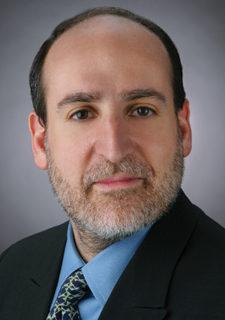Strategic partners
Booz & Company's Paul Leinwand '98 and Cesare Mainardi '86 discuss their contributions to Kellogg's strategic planning process — and the importance of matching an organization's strengths to marketplace needs
by Rebecca Lindell
 |
|
| Paul Leinwand '98 | |
 |
|
| Cesare Mainardi '86 | |
When you're laying out a strategic plan for the next five years, where do you begin? For Dean Sally Blount, the answer was easy: with guidance from Kellogg alumni who are recognized experts on strategy.
Paul Leinwand '98, partner in Booz & Company's Chicago office, and Cesare Mainardi '86, chief operating officer of Booz & Company and managing director of the firm's North American business, led a team that spent six weeks at Kellogg last spring to begin a strategic planning process that will guide the school toward the 2020 global marketplace.
The plan will be announced early next year.
Such work is nothing new for Leinwand and Mainardi, authors of The Essential Advantage (Harvard Business Review Press, 2011). Over the years, the Kellogg graduates have worked with scores of organizations to align their strategic direction with their unique strengths. They spoke recently with Kellogg World about this "coherence premium" and why it's so important, as Leinwand says, to be "proficient at many things, but famous for only a few."
Kellogg World: How did the opportunity to do this work with Kellogg come about?
Cesare Mainardi: When Sally was beginning to develop a long-term strategy in March 2011, she had a number of conversations with us around the concept of "capabilities" and how it applies to the school. It was clear that Kellogg's success over the years had come about because of its tremendous capabilities, particularly in the areas of marketing, collaboration and the MBA student experience. Our goal was to take a step back, look at the school's strengths and match those with the changing needs in the marketplace and, more broadly, the world of business today.
KW: You've talked about the importance of identifying — and building on — the strengths that differentiate an organization. Explain.
Paul Leinwand: Organizations of all kinds — public, private and not-for-profit — are most successful and create the most value when they work from their strengths. It might sound obvious, but too often organizations tend to "chase growth," and seek objectives that they might not have the capabilities to pursue. Unfortunately, this generates many more failures than successes. A market may look attractive, but if you don't have the capabilities to succeed, then you're going to spend a lot of energy distracting yourself from businesses where your most important capabilities will make a difference, where you will likely grow more successfully.
KW: Can you share any examples?
CM: Apple is the classic example, but it's not often explained through a capabilities lens. Years ago, analysts told the company to go after the MS-DOS and Windows market, because it was large and growing, they had low market share and most of the software developers were gravitating in that direction. Frankly, Apple nearly failed completely, because they didn't have the capabilities to produce, market or sell products that would work in the mass part of that market. On the other side, once they knew what they were great at, they defined the company around what they did versus what they sold — and they took off. Essentially everything they sell shares the same unique capabilities of design, simplification of the user interface, and management of a large network of software and content providers.
There's an analogy to the business education market. Every academic institution seems to be focused on teaching innovation, promoting global learning opportunities, offering a good student experience and every other activity that the market supposedly "demands." Yes, you need to be proficient at teaching many skills and other topics as well. But success — and just as importantly, providing a valuable experience for students entering or in the business world — means being great at a few things in particular. One school simply cannot do everything and the world is no better if each business school winds up competing with each other with the exact same offering.
KW: So what are the implications of this approach for Kellogg?
PL: One thing we talk about in our book is the importance of having a clearly stated way of creating value in the world. Too often organizations simply do what they do: They produce things, but they are not necessarily clear about their choices. Educational institutions are no exception. They become focused on questions such as: How big is the incoming class? Are we bringing in enough revenue? But it's important to step back and ask: What is our place in the world? A business school, in particular, must be very aspirational about helping organizations succeed. This is so important today. The business world is struggling to create sustainable growth and Kellogg can, and must, play a role here.
Look at Kellogg's history. One reason why the school invested so heavily and so early in the discipline of marketing was because this was an emerging but clearly substantial area where companies would invest in growth — and executives were looking for guidance on methods, best practices and the important link to strategy. The same was true, years later, with collaboration studies. Functions within organizations were becoming very specialized, and managers had to learn how to bring teams together and work toward a common goal. The school recognized that as an opportunity, and the world needed it.
Now we have to ask what the topics will be that Kellogg faculty and students can teach, research and practice more effectively and sustainably than anyone else — and how Kellogg's existing strengths can make its contributions meaningful to the topic. This kind of inquiry is exactly what Dean Blount has asked the strategic planning team to address.
KW: You talk about the importance of a "coherence premium." What's that?
CM: A "coherence premium" is what results when three elements come together: an organization's system of distinctive capabilities, its way of creating value, and the portfolio of products and services. Those three areas are the most critical components when you are trying to execute a strategy. They have to be aligned.
And execution has to be embedded into the strategy itself. Companies too often start with a premise of, "I have a portfolio of services and products, and I have to design a strategy around them." They don't ask the fundamental question: Why does this portfolio belong together? What's the coherence around all of my different businesses, and how do they share the same system of capabilities?
In all the industries that we evaluate, we see over and over again that companies with greater coherence have greater returns. It's not surprising, because what they're doing is building the best capabilities, linking them in a system and competing in a way that their less coherent competitors can't match.
KW: You make it sound simple, but the actual process of doing that must be quite complex.
PL: Yes, there are many impediments that must be managed, and many people who must be brought on board. But running an incoherent organization — one that chases too many priorities, invests in too many capabilities, and changes its direction frequently — is even more complex. The real opportunity for Kellogg now is to step back, identify what would be a more coherent strategy and create a road map to begin to move in that direction.
KW: Coherence is really about getting clarity on your strengths — and building them into your entire business strategy.
CM: Exactly. It's identifying the areas you're great at — and the capabilities that are going to be important to your success going forward. It's making sure you have enough focus and investment behind these areas to be truly great, and thinking about your organization in terms of its capabilities: what it does, rather than what it sells or provides. This view of strategy can lead to continually stronger growth (or greater reputation) as you leverage what you're great at in new markets. It's also making sure your capabilities encompass all the products and services in your portfolio, and making the hard choices around the question: "Does this really fit, or not?"
At the end of the day, capabilities outlast markets. They're hard to build, offer significant value and are very difficult to copy when integrated with everything you do. For a leader, they leave a legacy of differentiation and a company that knows what its purpose is. For a business school, there's a real opportunity not just to teach that type of leadership, but to become a model example.
Paul Leinwand '98 (left) and Cesare Mainardi '86, partners at Booz & Company, helped lay the groundwork for the Kellogg School's strategic planning process.


